En este post vamos a hablarte de otra obra de arte de la naturaleza alicantina, La Cova Tallada. Imagínate bañarte en una cueva en el mar, con aguas cristalinas, bóvedas de muchos metros de altura y donde solo entran unos pocos privilegiados. La Cova Tallada no es ni una playa ni una cala, sino un paraje natural único situado entre acantilados.
Pues te hablamos de la Cova Tallada de Jávea y la Cova Tallada de Dénia. Sí, sabemos que esto puede no entenderse, pero hay documentos que demuestran que esta cueva es la zona que exactamente separa Jávea o Xàbia de Dénia y parcialmente es de las dos poblaciones. Se encuentra en la reserva natural del Cabo de San Antonio y por la cual necesitas un permiso para visitarla en Semana Santa, Puente de Mayo y de Junio a Octubre.
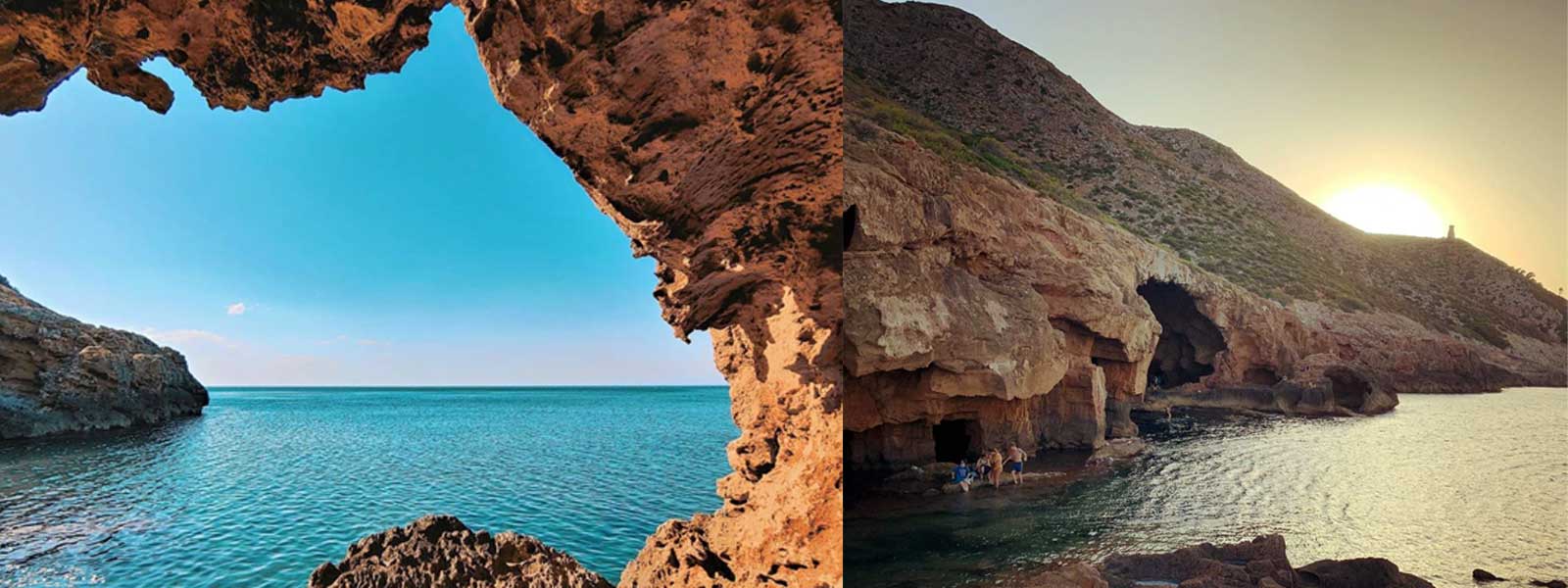
Index
What does La Cova Tallada mean? The Origin
Cova Tallá was a cave that was used as a quarry for the so-called “tosca stone”, which can be found in many buildings in Jávea or in the castle of Dénia. Hence its name, “carved cave”, since we will find the cut stone inside this aquatic quarry at sea level.
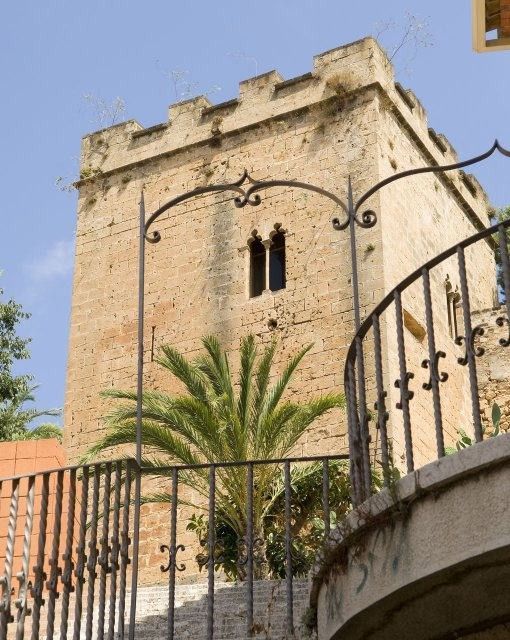
This quarry at water level, has a natural part and another one created by the action of man when extracting the calcareous sandstone. Some date its use as a quarry from the Muslim period and others even from Roman times. In 1972 these practices were banned in order to conserve the coastline.
Book your visit to the cave, it is compulsory.
Reservations for the Cova Tallada are free, for a maximum of 5 people per reservation. You can make your reservation up to 10 days before your visit. Always on the official website of Natural Parks of the Generalitat Valenciana.
- Visitas reguladas en 2022: desde el 9 de Abril al 25 de Abril (ambos incluidos), desde el 28 de Abril al 5 de Mayo (ambos incluidos) y desde el 15 de Junio al 15 de Octubre (ambos incluidos). Según la resolución del 1 de Marzo de 2022.
- Each permit allows a maximum of 5 people.
- El horario de la autorización es para entrar a la Cueva. El periodo de estancia máximo en la cueva será de 1 hora y 30 minutos a contar desde la hora que aparece en la autorización.
- Reservations can be made 10 days in advance of the visit.
- El solicitante debe llevar el DNI.
- No hay cobertura móvil y no hay socorrista.
At the entrance to the route they are in charge of regulating the access.
How to get to the Cova Tallada on foot?
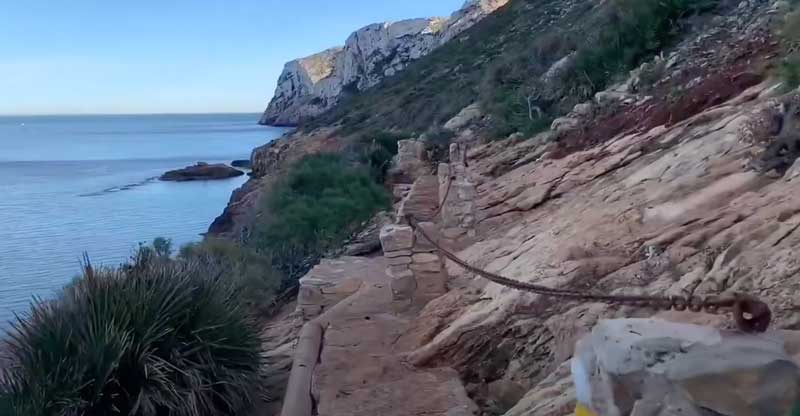
Recommended route: to get to the Cova from Dénia
With the liberalization of the AP-7 motorway the easiest way is to go to Dénia and from there take the path to the cave. To park, we leave you a link to Googlemaps with the beginning of the Milky Way Street, the beginning of the route.
The shortest route to the Cova Tallada is from Dénia, from the beach of Les Rotes, from Calle Vía Láctea, along a steep mountain path of about 2km round trip. Although it is quite simple, it has sections where you have to use chains anchored to the wall as handrails, to go up and down certain sections of “natural staircase”.
The whole route is done through a path with endemic plants of the area, with palmettos, the silente de Ifach (like the rock) or the marine juniper. And if you are lucky you will see the cormorant or the peregrine falcon. Seagulls too, as many of those as you want. As it suffered a fire years ago, the landscape is a mixture of germinating plants and others in the recovery phase.
The access path to the cave passes through cliffs, with ups and downs, and we recommend the following:
- Appropriate footwear for about 30 minutes of dirt and slippery paths. Boots or sneakers.
- Suitable footwear for the cave and the sea: booties.
- It is a complicated way to go with children or people with some kind of permanent or temporary disability: Pregnant women, people with reduced mobility…
- Not suitable for people who suffer from vertigo.
- Do not overload your backpack, better light.
- Take care of the schedules. Go out first thing in the morning, before it gets hot, time your run and calculate your return. Don’t let it get dark, as there is no lighting of any kind.
It goes without saying that you take the basic hiking and diving pack, with high factor sunscreen, plenty of water, food, shoes, swimsuit, towel, snorkeling equipment…
The Gerro Tower
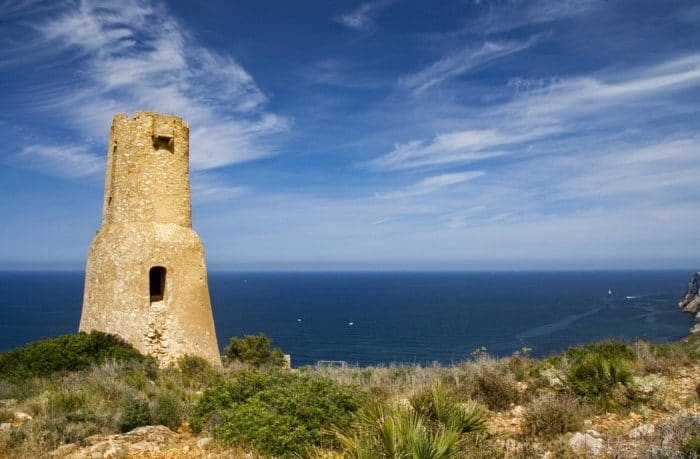
As you are climbing up, if you continue you will find the Torre del Gerro, a watchtower from the 16th century. These towers, which you will find all along the Alicante coastline, were towers to watch out for the arrival of the Barbary pirates. If you have a little time to spare, go up and enjoy the incredible views of the coast of Alicante, the Montgó Massif Park and the Cabo de San Antonio Reserve. It is free access, no reservations are required.
Alternative Route: how to get to the Cova Tallada from Jávea
On the official website of the Montgó Natural Park we should consult the opening of the routes, especially between June and September. To get there from Jávea there are two routes to choose from:
- Route from the Port of Jávea. This route is about two and a half hours long. Here is the link to the port of Jávea and here is the link to the route in wikiloc of the circular route to the Cova Tallá from Jávea. We will pass the Cape of San Antonio, Torre del Gerro, Cova Tallada and the windmills. Enjoy the Montgó Park.
- Route from the Sanctuary of the Mare de Deu dels Àngels. We leave you a link to the route on Wikiloc. This route takes about 40 minutes.
We insist that if what we want is to bathe in the cave, we should choose among all the routes the one recommended by Dénia. There we will have authorized access with our reservation.
How to get to the cave from the sea?
You can also reach the Cova from the sea by kayak or paddle surfing, but you will also have to book. If you talk to a kayak company, they do organised trips from Les Rotes beach in Denia, along the cliffs to the cave. Sign up at 7mar.es for a Paddle Surf route to the cave.
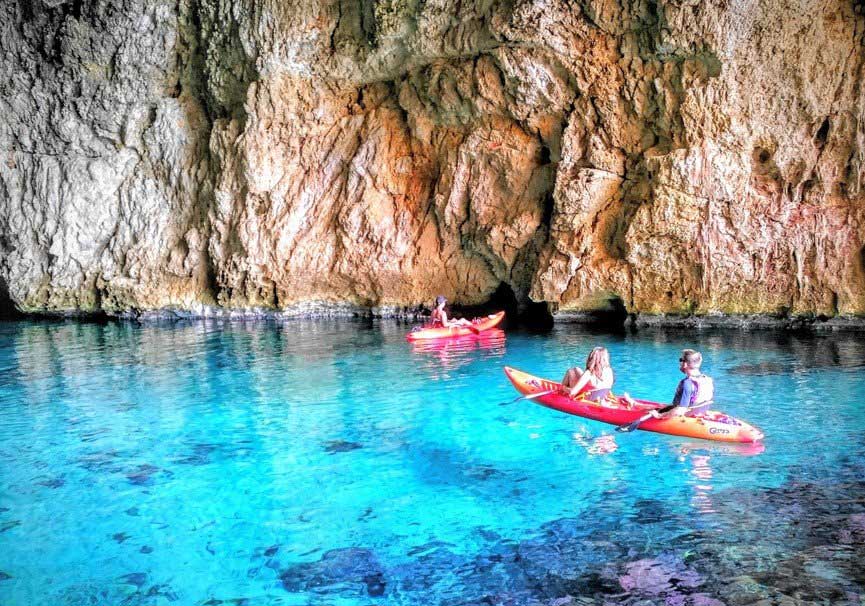
Inside the cave
In the cave we will find a natural pool of about 60 cm deep, with a very interesting seabed. The water is very fresh, as it does not get the sun. Behind this pool we will find a traditional cave where you can observe the action of man on its walls. You will soon see the quarry marks.
At the entrance of the cave there is an inscription: “Philipus III hispus rex cavernam hanc penetravit an MDXCIX”. It means that King Philip III was in that cave in 1599. There is an urban legend that says that the cave was used as a secret place to store supplies by German submarines in World War II.
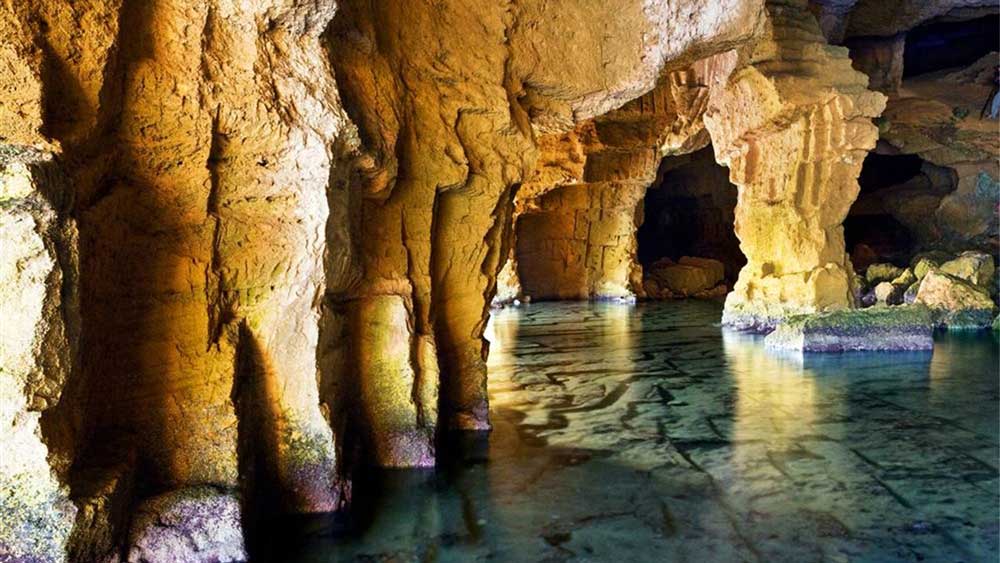
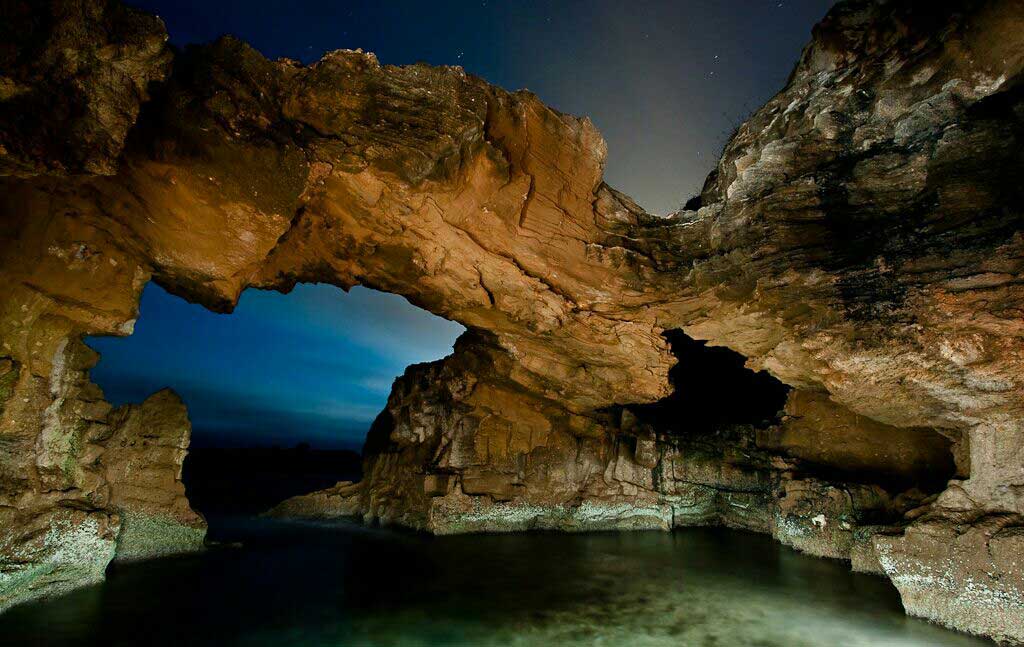
Out of the cave
In front of the cave you will find a small islet, a large rock from which you can take frontal photos. We invite you to snorkel in a calm sea and discover a unique seabed. As a good snorkeling professional we don’t need to tell you to take care of the bottom, don’t take anything with you and don’t disturb the grotto. Its use as a quarry is a thing of the past.
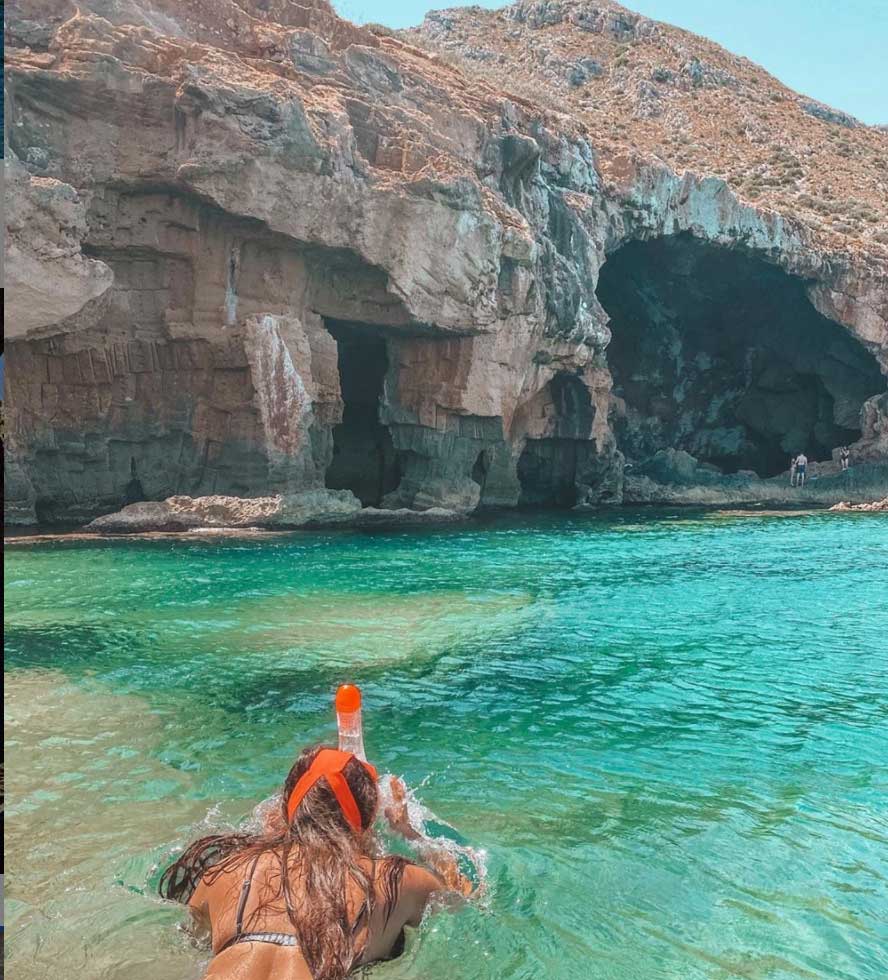
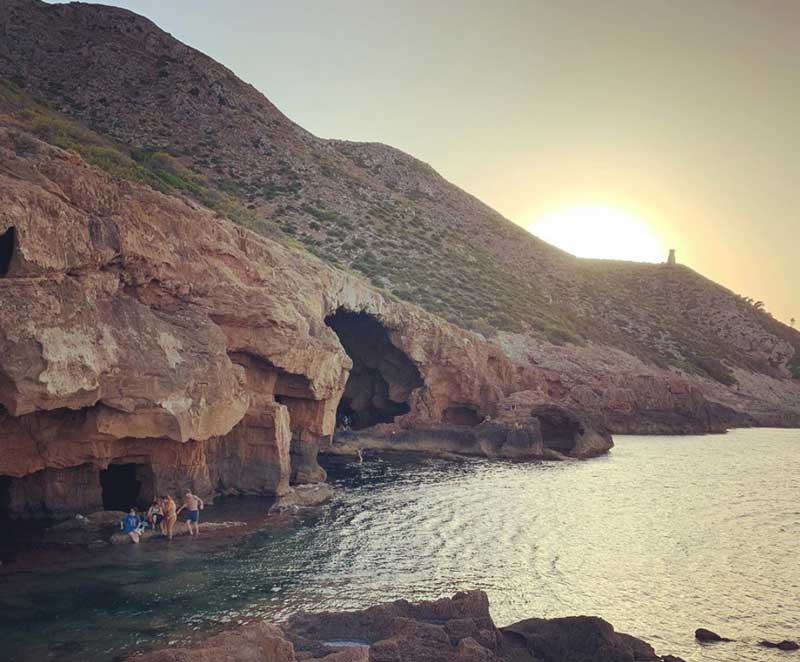
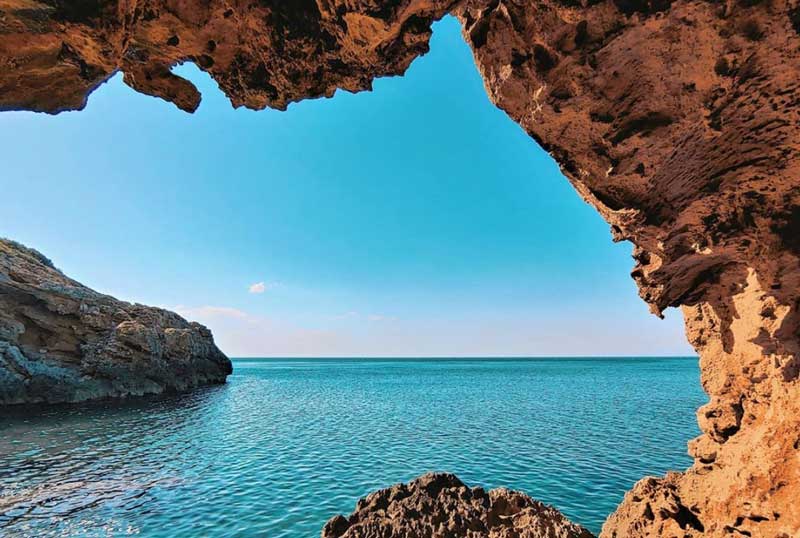
Video of the Route and the Tallà Cave
Protection of the Montgó and the Cape of San Antonio
We have been asked to insist on respect for these natural jewels of Jávea / Xàbia and Denia. Both the access routes along the coast and the tower or cave must be protected and kept clean. We are talking about a marine reserve and a nature reserve.
Many animals live around the area of the trails or the tower and any debris or garbage can affect them. Please, always keep the respect and Alicante will continue to offer you magical places.
If you are looking for incredible places you don’t need to leave Spain, both on the coast and in the interior of Alicante we have many. When you finish this article, we leave you the link to the list of the 9 things to see in Dénia in 1 day, in which we talk about the natural park of Montgó, the Torre del Gerro or the beaches of Dénia. Enjoy the Comunitat Valenciana, Mediterranean live.

